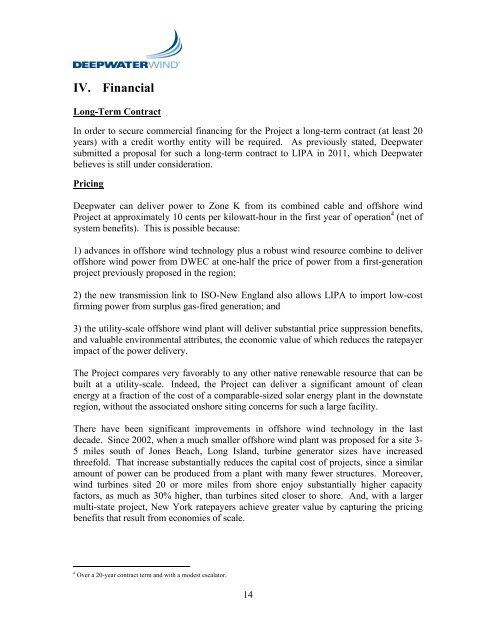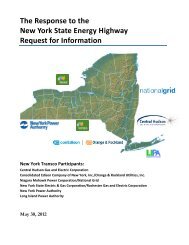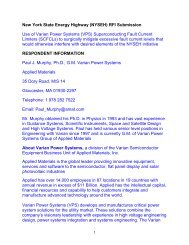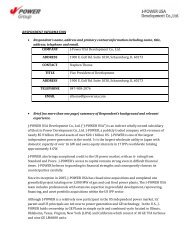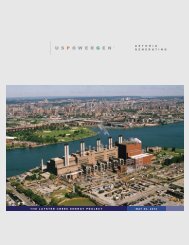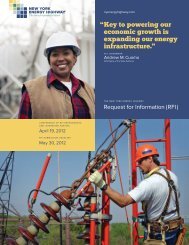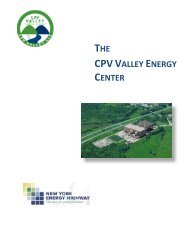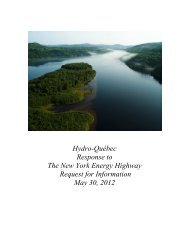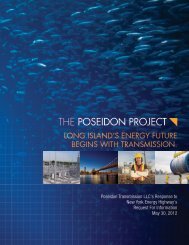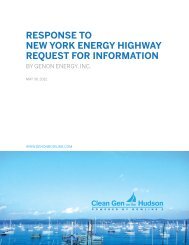Deepwater Wind - Energy Highway
Deepwater Wind - Energy Highway
Deepwater Wind - Energy Highway
Create successful ePaper yourself
Turn your PDF publications into a flip-book with our unique Google optimized e-Paper software.
!<br />
IV. Financial<br />
!<br />
Long-Term Contract<br />
In order to secure commercial financing for the Project a long-term contract (at least 20<br />
years) with a credit worthy entity will be required. As previously stated, <strong>Deepwater</strong><br />
submitted a proposal for such a long-term contract to LIPA in 2011, which <strong>Deepwater</strong><br />
believes is still under consideration.<br />
Pricing<br />
<strong>Deepwater</strong> can deliver power to Zone K from its combined cable and offshore wind<br />
Project at approximately 10 cents per kilowatt-hour in the first year of operation 4 (net of<br />
system benefits). This is possible because:<br />
1) advances in offshore wind technology plus a robust wind resource combine to deliver<br />
offshore wind power from DWEC at one-half the price of power from a first-generation<br />
project previously proposed in the region;<br />
2) the new transmission link to ISO-New England also allows LIPA to import low-cost<br />
firming power from surplus gas-fired generation; and<br />
3) the utility-scale offshore wind plant will deliver substantial price suppression benefits,<br />
and valuable environmental attributes, the economic value of which reduces the ratepayer<br />
impact of the power delivery.<br />
The Project compares very favorably to any other native renewable resource that can be<br />
built at a utility-scale. Indeed, the Project can deliver a significant amount of clean<br />
energy at a fraction of the cost of a comparable-sized solar energy plant in the downstate<br />
region, without the associated onshore siting concerns for such a large facility.<br />
There have been significant improvements in offshore wind technology in the last<br />
decade. Since 2002, when a much smaller offshore wind plant was proposed for a site 3-<br />
5 miles south of Jones Beach, Long Island, turbine generator sizes have increased<br />
threefold. That increase substantially reduces the capital cost of projects, since a similar<br />
amount of power can be produced from a plant with many fewer structures. Moreover,<br />
wind turbines sited 20 or more miles from shore enjoy substantially higher capacity<br />
factors, as much as 30% higher, than turbines sited closer to shore. And, with a larger<br />
multi-state project, New York ratepayers achieve greater value by capturing the pricing<br />
benefits that result from economies of scale.<br />
!!!!!!!!!!!!!!!!!!!!!!!!!!!!!!!!!!!!!!!!!!!!!!!!!!!!!!!!<br />
4 Over a 20-year contract term and with a modest escalator.<br />
!<br />
14


